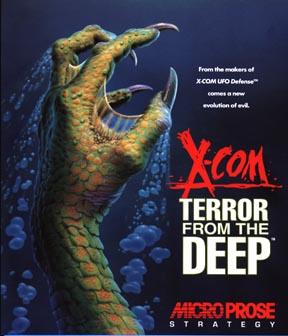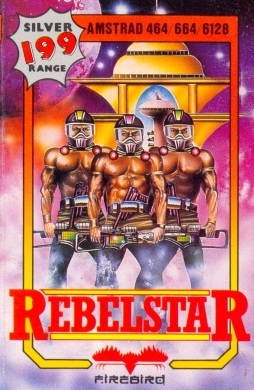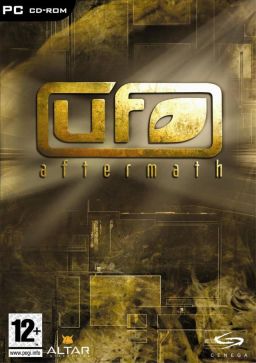
A tactical shooter is a sub-genre of first- and third-person shooters, associated with using strategy, planning, and tactics in gameplay, as well as the realistic simulations of ballistics, firearm mechanics, physics, stamina, and low time to kill. Dating back to strategy games from the late 1980s, the genre first rose to prominence in the late 1990s with the releases of several well-received tactical shooters. The popularity of the genre saw a decline in the late 2000s as fast-paced "arcade"-like action shooters rose to prominence, it has seen a revitalization since the mid-2010s with the successful releases of several modern tactical shooters.

XCOM, is a science fiction video game franchise featuring an elite international organization tasked with countering alien invasions of Earth. The series began with the strategy video game X-COM: UFO Defense created by Julian Gollop's Mythos Games and MicroProse in 1994. The original lineup by MicroProse included six published and at least two canceled games, as well as two novels. The X-COM series, in particular its original entry, achieved a sizable cult following and has influenced many other video games; including the creation of a number of clones, spiritual successors, and unofficial remakes.

X-COM: Apocalypse is a 1997 science fiction tactical strategy game. It is the third game in the X-COM video game series. It was developed by Mythos Games, and published by MicroProse in 1997 for DOS and Microsoft Windows.

X-COM: Terror from the Deep is a strategy video game developed and published by MicroProse for the PC in 1995 and for the PlayStation in 1996. It is a sequel to X-COM: UFO Defense and the second game of the X-COM series, this time taking the war against a renewed alien invasion into the Earth's oceans.

UFO: Enemy Unknown, also known as X-COM: UFO Defense in North America, is a 1994 science fiction strategy video game developed by Mythos Games and MicroProse. It was published by MicroProse for DOS and Amiga computers, the Amiga CD32 console, and the PlayStation. Originally planned by Julian Gollop as a sequel to Mythos Games' 1988 Laser Squad, the game mixes real-time management simulation with turn-based tactics. The player takes the role of commander of X-COM – an international paramilitary and scientific organization secretly defending Earth from an alien invasion. Through the game, the player is tasked with issuing orders to individual X-COM troops in a series of turn-based tactical missions. At strategic scale, the player directs the research and development of new technologies, builds and expands X-COM's bases, manages the organization's finances and personnel, and monitors and responds to UFO activity.

Xevious is a vertically scrolling shooter arcade video game developed and published by Namco in 1982. It was released in Japan by Namco and in North America by Atari, Inc. Controlling the Solvalou starship, the player attacks Xevious forces before they destroy all of mankind. The Solvalou has two weapons at its disposal: a zapper to destroy flying craft, and a blaster to bomb ground installations and enemies. It runs on the Namco Galaga arcade system.
Tactical role-playing games, also known as strategy role-playing games and in Japan as simulation RPGs, are a video game genre that combines core elements of role-playing video games with those of tactical strategy video games. The formats of tactical RPGs are much like traditional tabletop role-playing games and strategy games in appearance, pacing, and rule structure. Likewise, early tabletop role-playing games are descended from skirmish wargames such as Chainmail, which were primarily concerned with combat.

X-COM was part of a budget range video game series released in 1999 by Hasbro Interactive for Microsoft Windows that relied solely on the play-by-mail concept.

X-COM: Alliance is a cancelled video game in the X-COM series. The game was developed by two different teams of MicroProse developers between 1995 and 2002. It had the player assume the role of commander of the militarized scientific mission lost in space during the aftermath of X-COM: Terror from the Deep.

Laser Squad is a turn-based tactics video game, originally released for the ZX Spectrum and later for the Commodore 64, Amstrad CPC, MSX, Amiga, Sharp MZ-800 and Atari ST and PC computers between 1988 and 1992. It was designed by Julian Gollop and his team at Target Games and published by Blade Software, expanding on the ideas applied in their earlier Rebelstar series. Laser Squad originally came with five mission scenarios, with an expansion pack released for the 8-bit versions, containing a further two scenarios.
Julian Gollop is a British video game designer and producer specialising in strategy games, who has founded and led Mythos Games, Codo Technologies and Snapshot Games. He is known best as the "man who gave birth to the X-COM franchise."

The Rebelstar games are a series of turn-based tactics video games designed by Julian Gollop. Rebelstar Raiders was published in 1984 by Red Shift for the ZX Spectrum. It was reworked in machine code as Rebelstar, published by Firebird in 1986. A sequel, Rebelstar II, was published in 1988 by Silverbird. Rebelstar, but not its sequel, was also adapted for the Amstrad CPC home computer.

UFO: Aftermath is a 2003 real-time tactics/turn-based strategy video game created by ALTAR Interactive. It is a homage to the X-COM game series, with roots in the unfinished game The Dreamland Chronicles: Freedom Ridge. It was followed by two sequels, UFO: Aftershock (2005) and UFO: Afterlight (2007).

The Bureau: XCOM Declassified is a 2013 tactical third-person shooter video game. It was developed by 2K Marin and published by 2K. As the eighth title in the turn-based strategy series X-COM and a narrative prequel to XCOM: Enemy Unknown, the game was released for PlayStation 3, Windows, and Xbox 360 in August 2013. Set in late 1962 at the height of the Cold War, the game's premise mainly revolves around The Bureau, the predecessor of the Extraterrestrial Combat Unit (XCOM), as they attempt to repel an alien invasion. As a tactical shooter, players can use the battle focus mode to issue commands to two other agents accompanying the protagonist, William Carter. Players can permanently lose their squad members so they must make good tactical decisions.
UFO: Alien Invasion is a strategy video game in which the player fights aliens that are trying to take control of the Earth. The game is heavily influenced by the X-COM series, especially X-COM: UFO Defense.

UFO: Afterlight is a 2007 real-time tactics/turn-based strategy video game and the third in Altar Games' UFO series. Like its predecessors UFO: Aftermath and UFO: Aftershock, it combines squad-level tactical combat with overlying strategic elements inspired by the 1994 classic X-COM: UFO Defense.

The Dreamland Chronicles: Freedom Ridge is an unreleased video game for Microsoft Windows and PlayStation 2 by Mythos Games. Developed by the team which produced X-COM: UFO Defense, including lead designer Julian Gollop, the game was planned to be "a remake of the first X-COM with 3D graphics," as the first of four games planned in the new series. Cancelled in 2001, the unfinished game was later bought and partially turned into UFO: Aftermath by Altar Interactive, which was in turn itself followed by two sequels. Some elements of the game are also present in Gollop's own Phoenix Point.

Tom Clancy's Ghost Recon: Shadow Wars is a turn-based tactics video game for the Nintendo 3DS developed and published by Ubisoft in 2011. The game is part of the Ghost Recon series of the Tom Clancy games. First images of the game were leaked by IGN in 2010. The game was released on March 25, 2011 in Europe, March 27 in North America, and March 31 in Australia as a launch title for Nintendo's new console. It was later released in Japan on May 19, 2011. The game released in North America five days before the Nintendo 3DS North American launch.

XCOM: Enemy Unknown is a 2012 turn-based tactics video game that was developed by Firaxis Games and published by 2K. It presents a "reimagined" version of the 1994 strategy game X-COM: UFO Defense—also known as UFO: Enemy Unknown. XCOM: Enemy Unknown is set during an alien invasion of Earth in an alternative version of 2015; the player controls an elite, multinational, paramilitary organization called XCOM and commands troops in a series of turn-based tactical missions. Between missions, the player directs the research and development of technologies from recovered alien technology and captured prisoners, expands XCOM's base of operations, manages finances, and monitors and responds to alien activity.

Phoenix Point is a strategy video game featuring a turn-based tactics system that is developed by Bulgaria-based independent developer Snapshot Games. It was released on December 3, 2019, for macOS and Microsoft Windows, for Stadia on January 26, 2021, and Xbox One and PlayStation 4 on October 1, 2021. Phoenix Point is intended to be a spiritual successor to the X-COM series that had been originally created by Snapshot Games head Julian Gollop during the 1990s.


















